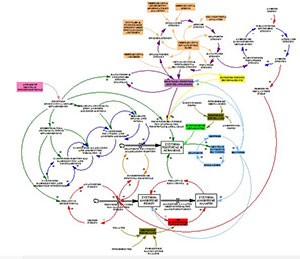Systems thinking and modeling is a vital method to gain useful insights into complex situations with policy resistance. The usage of system dynamics is a sophisticated approach for effective decision making and learning. Principles for effective dynamic modeling are described below:
-After a detailed problem definition should be reconsidered if system dynamics is the proper tool for problem solving. 
-Dynamic model should have a clear purpose and should solve a specific problem.
-Dynamic modeling should enable realistic planning and implementation deadlines as per client requirements without delays.
-Modeling process should be aligned with organization policies and procedures, resulting a diagnosis into organization structure and culture.
-Enable experts, analysts and top management as organization designers to reassure that a modelling process leads to greater success, with respect to management policies and organizational structure.
-Modeling process should be validated based on continuous improvement cycle and be enriched as per client feedback or other accelerating changes.
-Keep limited information to conceptual model prior the development of simulation model
-Focus on subsystems/components interaction instead of representing detailed information
-Effective modelling requires a suite of integrated tools and methods for problem solving
-Dynamic models are operate best through an iterative long term process of personal, organizational and social change.
Source: www.systemantis.com
Contact us to receive a professional advisory in your area of interest
